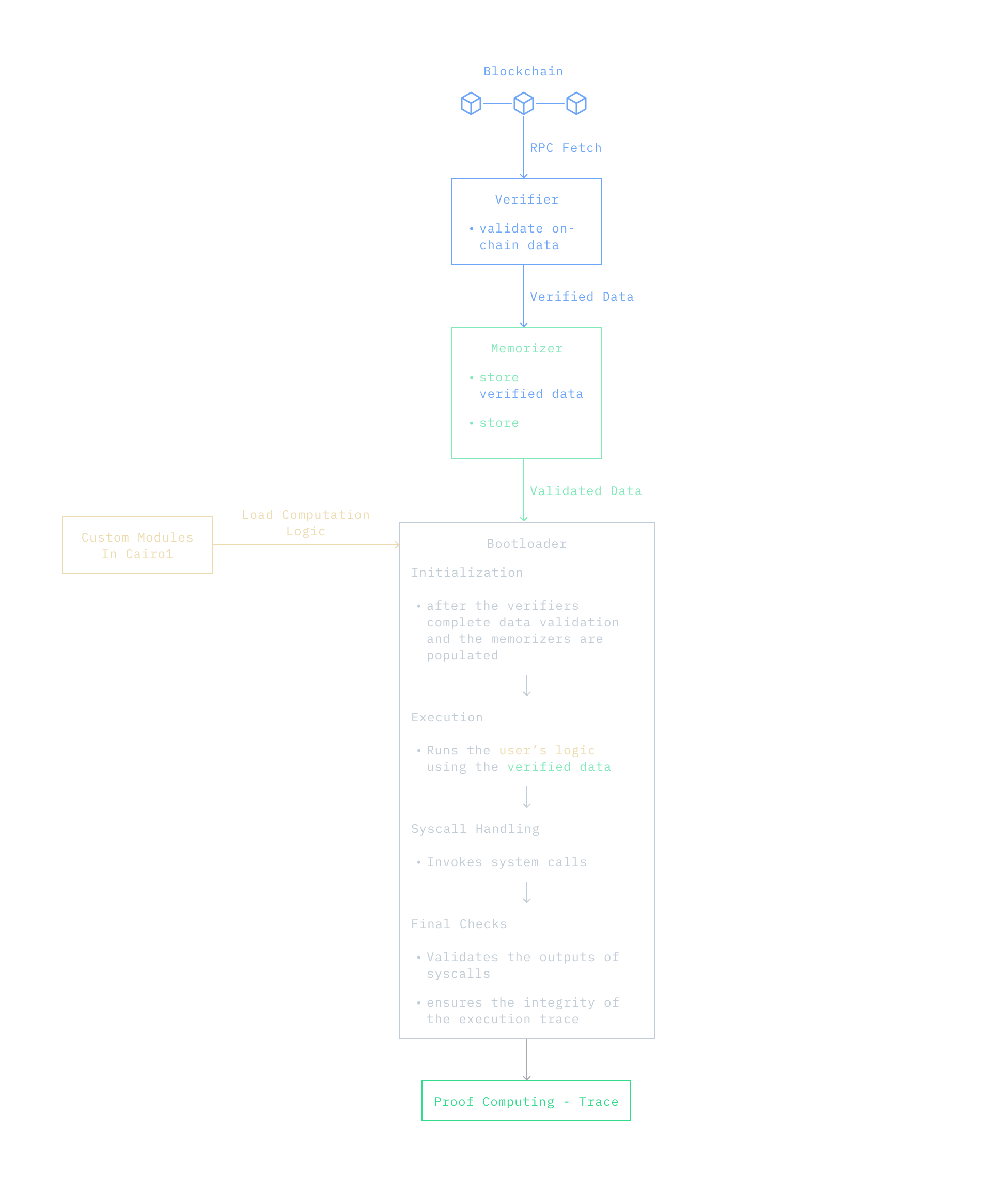Architecture
The HDP system is composed of several interlocking parts, each responsible for a specific piece of the data processing pipeline.
1. Verifiers
-
Function:
Validate on-chain data by checking the correctness of inclusion proofs (e.g., Merkle Patricia Trie for Ethereum) and confirming the presence of block headers. -
Chain-Specific Implementation:
Different verifiers exist for each supported blockchain (e.g., Ethereum, StarkNet) and the system is designed to be extended to support additional chains.
2. Memorizers
-
Function:
Act as internal dictionaries to store verified and decoded data for later retrieval by the execution engine. -
Usage:
The bootloader retrieves data from these memorizers to ensure that the user-defined logic is executed on validated inputs.
3. Decoders
-
Function:
Convert raw RPC data into formats that are usable by the user logic. This includes processes like RLP decoding or field element conversion. -
Output:
The decoded results are stored in the memorizers, ensuring quick and secure access during the execution phase.
4. Bootloader
-
Function:
Serves as the execution engine that loads the user-defined Cairo1 bytecode, runs the logic, and manages the data flow from the memorizers. -
Workflow:
- Initialization: Runs after the verifiers complete data validation and the memorizers are populated.
- Execution: Runs the user’s logic using the verified data.
- Syscall Handling: Invokes system calls (e.g., cryptographic hash functions provided by Cairo0) as required.
- Final Checks: Validates the outputs of syscalls and ensures the integrity of the execution trace.
After execution, the produced trace can be used in a zero-knowledge proving pipeline. The resulting proof attests that the data used was valid and that the user-defined logic was executed correctly.
